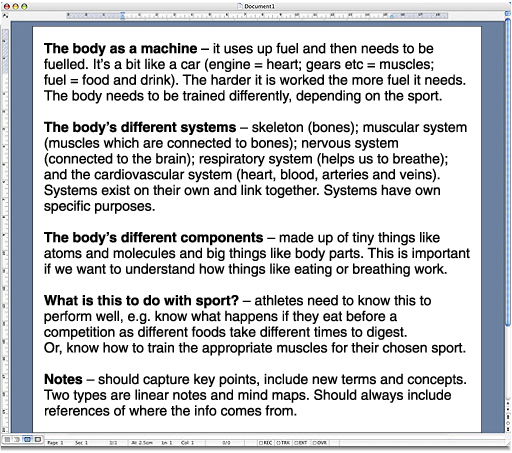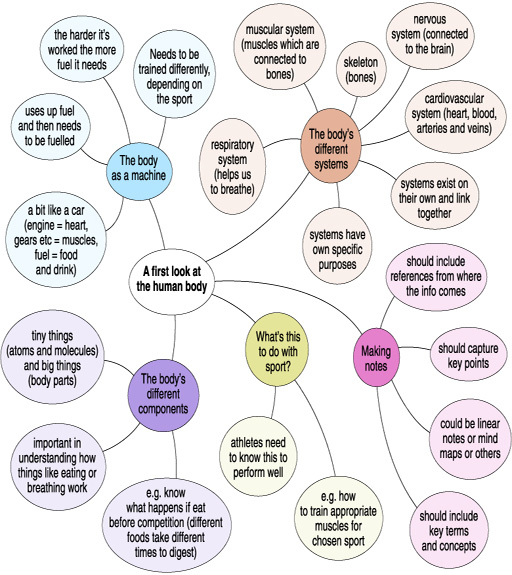2.6 Making notes
Turning ideas you learn from this course into your own words through taking notes can help sharpen your understanding and focus your thinking. The key to successful note taking is to create notes that capture the key points of what you are reading, watching or listening to, rather than writing pages and pages that are boring to write and even more boring to read! You will probably come across many new scientific terms as well as new concepts and so making notes is a good way to make sure you understand these new ideas.
The next activity gives you a chance to practice making linear notes and a mind map.
Linear notes are the most common form of note taking and probably the one with which you are most familiar. It involves writing notes by picking out and recording the most important points as you work through the course. Avoid at all costs simply typing out most or all of the text again, or just cutting and pasting large amounts of text – you won't fully engage with the material and absorb its ideas.
The best thing to do is to try to make sure your notes are in your own words as this will help you understand what you have been reading. Remember to add a reference to the part of the course your notes cover so you can easily find your way back to it.
If you haven't tried creating a mind map (or spider diagram) it is well worth giving it a try. When mind mapping you generally put the central topic in the middle of the page and then arrange the different aspects of the topic around it. Mind maps give you a clear visual representation of the relationship between points or ideas and many people find that the effort they put into constructing a mind map is enough to fix the information in their memory. One great thing about mind maps is there are really no rules – you can be as creative as you like. You can draw one by hand or you could try and create one using your word processor.
Activity 3: What you need to do
Look back over this section and make notes of the main points as you go along. Have a go at creating some linear notes and a mind map. If you are unsure about how to go about creating a mind map, read Visual techniques for revision.
Discussion
How did you get on? Did you find one type of notes easier to make? Have a look at examples of both types of notes here, how do they compare with yours?


Make sure you carry on making notes as you work through the course.
